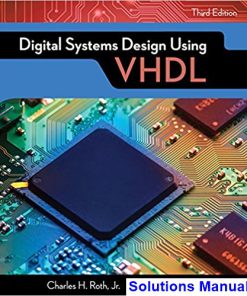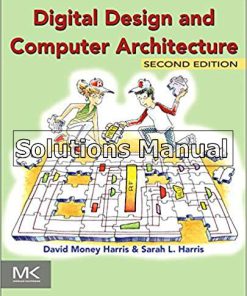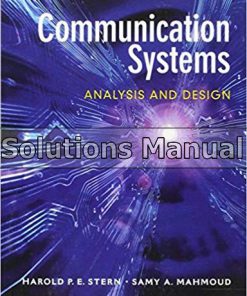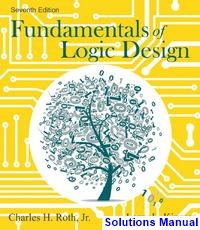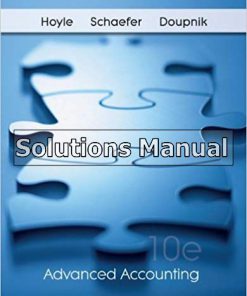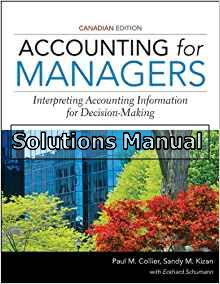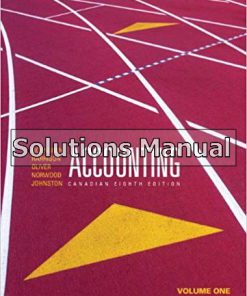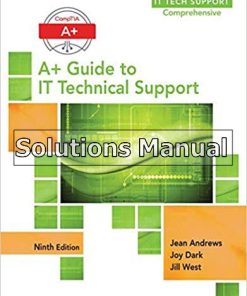Digital Systems Design Using Verilog 1st Edition Roth Solutions Manual
$50.00 Original price was: $50.00.$26.50Current price is: $26.50.
Digital Systems Design Using Verilog 1st Edition Roth Solutions Manual.
Digital Systems Design Using Verilog 1st Edition Roth Solutions Manual
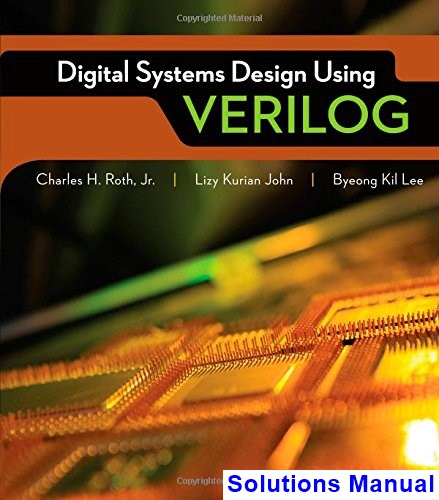
Product details:
- ISBN-10 : 9781285051079
- ISBN-13 : 978-1285051079
- Author: Charles Roth
Master the process of designing and testing new hardware configurations with DIGITAL SYSTEMS DESIGN USING VERILOG. This practical book integrates coverage of logic design principles, Verilog as a hardware design language, and FPGA implementation. The authors present Verilog constructs side-by-side with hardware, encouraging you to think in terms of desired hardware while writing synthesizable Verilog. Following a review of the basic concepts of logic design, the authors introduce the basics of Verilog using simple combinational circuit examples, followed by models for simple sequential circuits. Subsequent chapters ask you to tackle more and more complex designs.
Table contents:
1. REVIEW OF LOGIC DESIGN FUNDAMENTALS.
Combinational Logic. Boolean Algebra and Algebraic Simplification. Karnaugh Maps. Designing with NAND and NOR Gates. Hazards in Combinational Circuits. Flip-Flops and Latches. Mealy Sequential Circuit Design. Design of a Moore Sequential Circuit. Equivalent States and Reduction of State Tables. Sequential Circuit Timing. Tristate Logic and Busses.
2. INTRODUCTION TO VERILOG.
Computer-Aided Design. Hardware Description Languages. Verilog Description of Combinational Circuits. Verilog Modules. Verilog Assignments. Procedural Assignments. Modeling Flip-Flops Using Always Block. Always Blocks Using Event Control Statements. Delays in Verilog. Compilation, Simulation, and Synthesis of Verilog Code. Verilog Data Types and Operators. Simple Synthesis Examples. Verilog Models for Multiplexers. Modeling Registers and Counters Using Verilog Always Statements. Behavioral and Structural Verilog. Constants. Arrays. Loops in Verilog. Testing Verilog Model. A Few Things to Remember.
3. INTRODUCTION TO PROGRAMMABLE LOGIC DEVICES.
Brief Overview of Programmable Logic Devices. Simple Programmable Logic Devices (SPLDs). Complex Programmable Logic Devices (CPLDs). Field-Programmable Gate Arrays (FPGAs).
4. DESIGN EXAMPLES.
BCD to 7-Segment Display Decoder. A BCD Adder. 32-Bit Adders. Traffic Light Controller. State Graphs for Control Circuits. Scoreboard and Controller. Synchronization and Debouncing. A Shift-and-Add Multiplier. Array Multiplier. A Signed Integer/Fraction Multiplier. Keypad Scanner. Binary Dividers.
5. SM CHARTS AND MIRCOPROGRAMMING.
State Machine Charts. Derivation of SM Charts. Realization of SM Charts. Implementation of the Dice Game. Microprogramming. Linked State Machines.
6. DESIGNING WITH FIELD PROGRAMMABLE GATE ARRAYS.
Implementing Functions in FPGAs. Implementing Functions Using Shannon’s Decomposition. Carry Chains in FPGAs. Cascade Chains in FPGAs. Examples of Logic Blocks in Commercial FPGAs. Dedicated Memory in FPGAs. Dedicated Multipliers in FPGAs. Cost of Programmability. FPGAs and One-Hot State Assignment. FPGA Capacity: Maximum Gates versus Usable Gates. Design Translation (Synthesis). Mapping, Placement, and Routing.
7. FLOATING-POINT ARITHMETIC.
Representation of Floating-Point Numbers. Floating-Point Multiplication. Floating-Point Addition. Other Floating-Point Operations.
8. ADDITIONAL TOPICS IN VERILOG.
Verilog Functions. Verilog Tasks. Multi-Valued Logic and Signal Resolution. Built-in Primitives. User Defined Primitives. SRAM Model. Model for SRAM Read/Write System. Rise and Fall Delays of Gates. Named Association. Generate Statements. System Functions. Compiler Directives. File I/O Functions. Timing Check.
9. DESIGN OF A RISC MICROPROCESSOR.
The RISC Philosophy. The MIPS ISA. MIPS Instruction Encoding. Implementation of a MIPS Subset. VHDL Model.
10. HARDWARE TESTING AND DESIGN FOR TESTABILITY.
Testing Combinational Logic. Testing Sequential Logic. Scan Testing. Boundary Scan. Built-In Self-Test.
People also search:
digital systems design using verilog 1st edition
digital systems design using verilog 1st edition pdf
digital system design using verilog syllabus
digital design using vhdl a systems approach
digital design system examples
Instant download after Payment is complete
You may also like…
Engineering
Microwave Circuit Design A Practical Approach Using ADS 1st Edition Yeom Solutions Manual
Solutions Manual
Information Technology
Fundamentals of Logic Design 7th Edition Roth Solutions Manual
Information Technology
Related products
Solutions Manual
Solutions Manual
Accounting Texts and Cases 13th Edition Anthony Solutions Manual
Solutions Manual
Solutions Manual
Accounting Information Systems 2nd Edition Hurt Solutions Manual
Solutions Manual
Accounting Volume 1 Canadian 8th Edition Horngren Solutions Manual
Solutions Manual
Accounting Volume 2 Canadian 8th Edition Horngren Solutions Manual
Solutions Manual
A+ Guide to IT Technical Support Hardware and Software 9th Edition Andrews Solutions Manual




